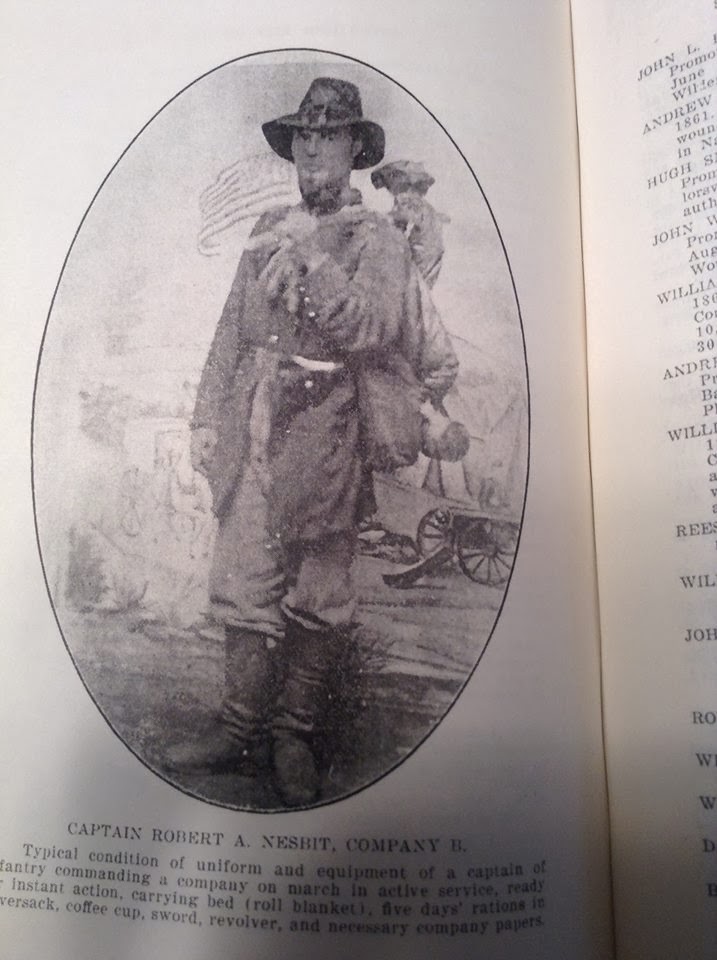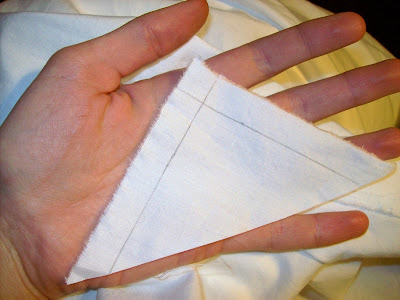Planning Civil War Uniform Coats
This post is research for a project. I am posting it on my blog because it seemed like a good way to organize and share the information. It contains only research, not anything that I have made. I will probably be editing this post as my planning progresses.
I will be making a civilian-style, commercial, Federal officer's sack coat and a Schuykill arsenal jacket. The sack coat will be a single breasted, five-button (using specialty officer's buttons) officer's coat in wool flannel. It will be lined in cotton flannel. It may need worsted wool trimming, as in the two inspiration photos of the officer with General Custer, but in most photos of junior officers, they don't have that trimming (according to Tom, my friend for whom I will be making the coat). The sack coat will have three outer pockets and an inner breast pocket.
These two sites are sources about original Civil War sack coats:
I will be making a civilian-style, commercial, Federal officer's sack coat and a Schuykill arsenal jacket. The sack coat will be a single breasted, five-button (using specialty officer's buttons) officer's coat in wool flannel. It will be lined in cotton flannel. It may need worsted wool trimming, as in the two inspiration photos of the officer with General Custer, but in most photos of junior officers, they don't have that trimming (according to Tom, my friend for whom I will be making the coat). The sack coat will have three outer pockets and an inner breast pocket.
These two sites are sources about original Civil War sack coats:
Info about J.T. Martin contract sack coat http://www.cwquartermaster.com/construct.htm
Lt. Starr Sack Coat (original): http://www.cjdaley.com/ltstarr.htm
The U.S. Quartermaster manual lists materials used to make various uniform items. (C.J. Daley Historical Reproductions, http://www.cjdaley.com/clothingmaterials.htm)
Lt. Starr Sack Coat (original): http://www.cjdaley.com/ltstarr.htm
The U.S. Quartermaster manual lists materials used to make various uniform items. (C.J. Daley Historical Reproductions, http://www.cjdaley.com/clothingmaterials.htm)
"Uniform Coat: Medium Size1 3/4 yards of 6-4 dark blue cloth or 3 1/2 yards of 3/4 cloth, 1 inch of sky blue facing cloth, 5/8 yard of black alpaca 30 inches wide, 7/8 yard of unbleached muslin or cambrie, 3/4 yard of 24 inch canvas, 1/8 yard of buckram, 1 sheet of black cotton wadding, 3/8 yard of muslin, 2 1/4 skeins of black silk, or same quantity of black linen thread No 40, 1 yard of 12 strands silk twist or same quantity or black linen thread No 40, 5 skeins of black linen thread No 40, 1/2 skein of W.B. Thread no , 11 coat buttons, 4 vest buttons, 1 black hook and eye. For musicians add 5 yards 3/8 worsted lace, and 2 skeins of thread."
Questions:
1. To line the coats, should I use regular solid color or plaid cotton flannel such as this one: http://www.joann.com/cozy-flannel-fabric/prd39349.html#start=1
Fabric (wool flannel):
Tom's choice: Wambaugh, White & Co. has this 8 oz., 100% wool, indigo color: http://wwandcompany.com/fabrics-supplies/us-fabrics/wool-flannel-for-fatigue-blouses.html, $32 per yard
Billiard cloth, replacement fabric for covering pool tables, is a quality option for fabric at a cheaper price. It can be found in 100% merino wool or wool/nylon blends. However, the ones that I've found are coated in polytetraflouroethylene for added durability--personally, I'd pay more to have pure wool with no extraneous chemicals.
Woolrich Woolen Mill has wool catered toward reenactors: http://www.woolrichfabrics.com/collection/civil-war_reenactment.php However, it is 85% wool and 15% nylon. It is not pure wool. Furthermore, it is sold wholesale by 15 yard bolts--more than I need right now.
Pattern options:
Pattern chosen by Tom for the sack coat, a "militarized civilian sack coat" that would need to be lengthened to look like an officer's coat: http://stores.gallarockpatterns.com/grsp-313-galla-rock-militarized-civilian-sack-coat-pattern/
Past Patterns (scroll down): http://www.longago.com/civilwarmen.html
County Cloth/Chas.R.Childs (sack coat, arsenal jacket, and more): http://www.crchilds.com/Patterns%20US%202013.html
Inspiration images (sent to me by Tom):

Questions:
1. To line the coats, should I use regular solid color or plaid cotton flannel such as this one: http://www.joann.com/cozy-flannel-fabric/prd39349.html#start=1
Fabric (wool flannel):
Tom's choice: Wambaugh, White & Co. has this 8 oz., 100% wool, indigo color: http://wwandcompany.com/fabrics-supplies/us-fabrics/wool-flannel-for-fatigue-blouses.html, $32 per yard
Billiard cloth, replacement fabric for covering pool tables, is a quality option for fabric at a cheaper price. It can be found in 100% merino wool or wool/nylon blends. However, the ones that I've found are coated in polytetraflouroethylene for added durability--personally, I'd pay more to have pure wool with no extraneous chemicals.
Woolrich Woolen Mill has wool catered toward reenactors: http://www.woolrichfabrics.com/collection/civil-war_reenactment.php However, it is 85% wool and 15% nylon. It is not pure wool. Furthermore, it is sold wholesale by 15 yard bolts--more than I need right now.
Pattern options:
Pattern chosen by Tom for the sack coat, a "militarized civilian sack coat" that would need to be lengthened to look like an officer's coat: http://stores.gallarockpatterns.com/grsp-313-galla-rock-militarized-civilian-sack-coat-pattern/
Past Patterns (scroll down): http://www.longago.com/civilwarmen.html
County Cloth/Chas.R.Childs (sack coat, arsenal jacket, and more): http://www.crchilds.com/Patterns%20US%202013.html
This pattern looks really great for the Schuykill arsenal jacket: http://stores.gallarockpatterns.com/grsp-315-galla-rock-federal-schuylkill-sack-coat-pattern/
Heidi Marsh pattern for basic sack coat:
Instructions for assembling a Federal officer's sack coat from The Sewing Academy, by Jim Ruley:
Inspiration images (sent to me by Tom):
 |

The next three photos are from http://howardlanham.tripod.com/linkgr3/link170.html, who says "Many photographs exist of officers wearing nonregulation coats. These are
comfortable utilitarian body or sack coats with lapel collars. They were worn
with shoulder straps and often have visible pockets, as seen in these examples.
The pants worn by the first lieutenant appear to be the same color as the coat,
suggesting that this may be a staff officer. The second lieutenant's lapels are
velvet. These coats when they are not patterned on the simple enlisted men's
sack coat were little different from those worn by civilians, except that they
had military buttons and shoulder straps. It is possible that some trim, such as
the pipping on the cuff of the first lieutenant, is in the branch color."





Did you finish this project? 'Sounds pretty cool.
ReplyDelete